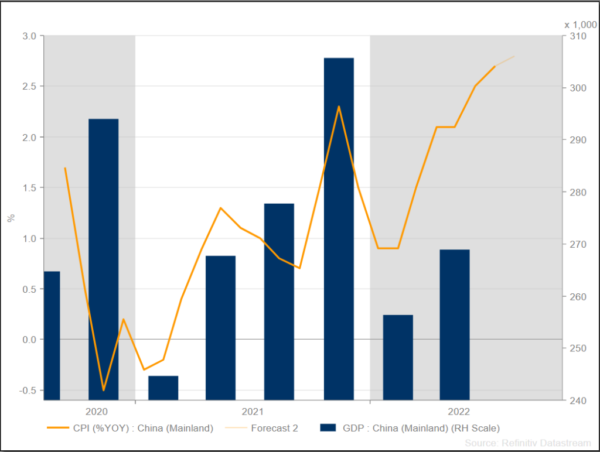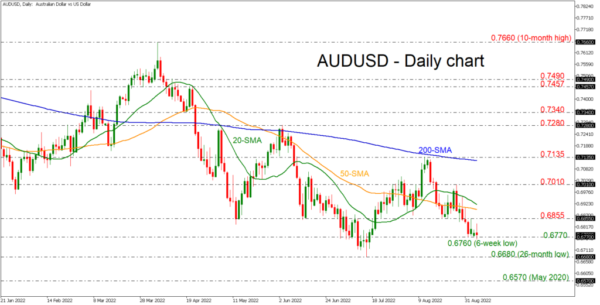A worldwide slowdown, particularly in China, is alleviating inflationary pressures, particularly for essential imports and commodities. The Chinese CPI data will come out on Friday at 01:30 GMT, giving some signs of the aussie’s next directional movement as it is still in a negative tendency after failed attempts to move higher.
The optimism that the Chinese economy will be the world’s largest by the end of the decade has been dimmed by slowing growth. China is a major factor in the reduction of foreign price pressures. The second-largest economy in the world, behind the United States, increased just 0.4% from a year earlier in the second quarter, its lowest growth rate in two years. While widespread Covid-19 lockdowns were responsible for the spring’s slowdown, China’s property collapse is now exerting a significant drag on GDP.
The decline in investment by developers has dampened the demand for industrial and energy goods. According to figures from the Chinese government, gasoline imports decreased by 36% in July compared to the same month a year prior, while steel imports plummeted by 25%.
Chinese CPI data expected to rise
Inflation rates that are through the roof are putting a strain on major economies throughout the world. Inflation in the United States dropped to 8.5% in July from a 40-year high of 9.1% in June, largely because of cheaper gasoline. U.S. inflation is still high, so the Federal Reserve will likely keep raising interest rates rapidly to bring it down. Meanwhile, after coming in at 2.7% in July, China’s annual inflation rate is expected to increase to 2.8% yoy in August. Since July 2020, this is the largest price increase consumers have seen. On a monthly basis, CPI data is predicted to drop to 0.2% versus 0.5%.
During its August meeting, People’s Bank of China (PBOC) reduced its loan prime rates to 3.65%, the second such rate cut of the year. This came as the board of governors of the central bank stepped up its attempts to boost borrowing demand in the face of recurrent Covid-19 outbreaks and a prolonged property market slump. The move occurred after the central bank abruptly lowered the rate on the one-year medium-term lending facility (MLF) and another short-term liquidity instrument last week, in response to data from July indicating that the Chinese economy was losing pace due to sluggish global development.
AUD/USD holds near 6-week low
Aussie/dollar is moving near its opening levels today and is still hovering near the six-week low of 0.6760 that was posted earlier today. The pair is still in a negative tendency as it is moving well below the 200-day simple moving average (SMA) and the 20- and 50-day SMAs are in the process to post a bearish crossover if the aussie continues to attract selling interest.
If the 0.6770 strong support is broken and the pair ends a session below it, then the market may move lower and test the 26-month trough of $0.6680 before encountering the significant challenge posed by the inside swing high of May 2020 at $0.6570.
In the positive scenario, the bulls may take the upper hand, with a potential test of the $0.6855 resistance ahead of the 50- and then the 20-day SMAs at $0.6895 and $0.6917 respectively. Moving higher, the $0.7010 barrier may come next, before resting near the 200-day SMA, which is standing marginally below the $0.7135 barricade.















